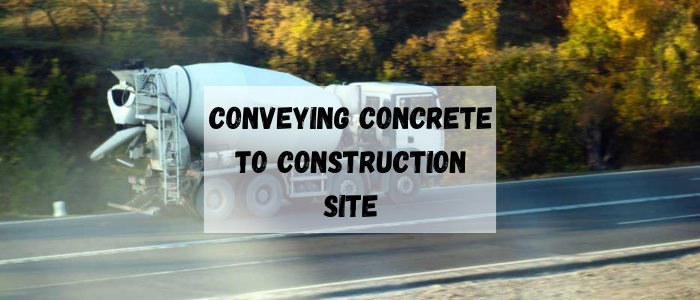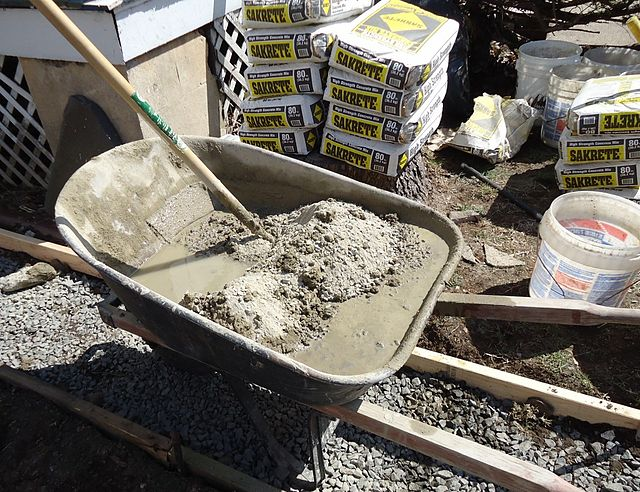After the formwork, the steel work, and embedded items are ready, a final inspection should be conducted to make sure that the plant and equipment are ready to go.
Read: SITE PREPARATION FOR CONCRETE PLACING
Ordering the right quantity of concrete and having the ready-mix provider ready to supply it at the specified rate are both important.
Transporting equipment, such as pumps, cranes, batch trucks, buckets, conveyors, and helicopters, should be capable of handling the concrete at the required rate.
Curing materials should be available.
Methods of placing fresh concrete
Direct discharge from a mixer into the forms, crane and buckets, pumps, conveyors, buggies, wheelbarrows, pneumatic placers, small railcars, or a combination of two or more of these technologies are all options for placing fresh concrete.
Equipment and concrete buckets have been delivered to remote or challenging locations using helicopters.
The method used depends on the size of the job, adequacy of space, and availability of
equipment. The displacing concrete should be as close as possible to the actual site.
Direct discharge
a technique for pouring concrete straight into forms or on the subgrade from a transport truck. A placing radius of approximately 5 m from the vehicle can be provided by additional chute lengths.
For a concrete placing to a lower level, such as a foundation, some sort of chuting arrangement for moving concrete is needed.
Chutes should have a rounded cross section, be constructed of metal or lined with metal, smooth to reduce friction and sticking, have the right slope to allow concrete to flow out quickly enough to maintain the chute clean, and be of the suitable size.
Any appropriate slope can be permitted as long as there is neither segregation nor separation. Application without segregation works best with a slope of roughly 1:3.
Buckets
Excellent means of conveying concrete.
For structural usage, the capacity ranges from less than 1 m3 to 10 m3 for mass concrete.
Cranes, derricks, trucks, rail cars, helicopters, and cableways can all be used to move buckets. In the process of constructing, buckets are often moved using cranes.
Care should be taken to avoid shaking and jarring the concrete, as this causes segregation, especially for relatively high-slump concrete
Concrete is also frequently moved by belt conveyor, wheelbarrows, and buggies.
Belts
Belts can move concrete long distances horizontally and, to some extent, vertically.
Wheelbarrows
Wheelbarrows with pneumatic tyres can be used to transport modest volumes of concrete over short distances. The most horizontal distance a wheelbarrow can go is around 60 meters. A wheelbarrow can carry a maximum of 1.2 m3 of concrete per hour when one person is using it.
Hand-operated carts can carry about 0.12 or 0.2 m3 each, with a maximum haul of about 60 m. A power-driven cart has a capacity of up to 1.2 m3 and can move a maximum of 17 m3 of concrete per hour on a moderate length of haul. Maximum haul should not exceed 300 m.
Pumping
Pumping is another effective method to move concrete to the formwork.

Concrete that has been pumped is transferred under pressure using a rigid pipe or flexible hose. Pumping has been increasingly common in the construction of large structures, bridge towers, and tunnels since the invention of self-compacting concrete.
Nowadays, with the help of special high-pressure pumps, concrete can be pumped a distance as far as 1400 m horizontally or as high as 420 m vertically.
The total pressure needed to pump concrete to a height of H can be estimated from the
following equation:
where:
- Pt is the total pressure needed, MPa;
- Pf is the pressure loss due to friction of the wall of the pipe, MPa/m;
- L is the total horizontal distance;
- H is the total vertical distance;
- ρ is the density of concrete, kg/m3;
- g is gravity acceleration, m/s2; and
- Pl is pressure loss due to local effects, such as the bending tube, MPa.
Once Pt is obtained, the capacity of the pump can be decided and equipment selected.
Conveying concrete to Construction Site
Read Also: How to Select the Construction Plant?

